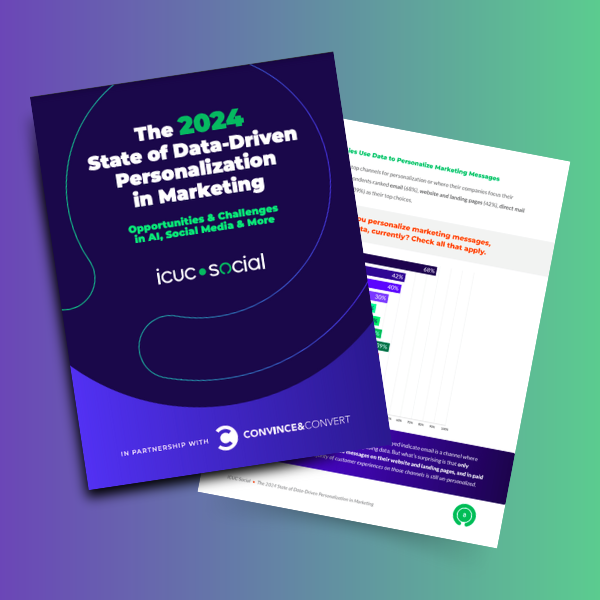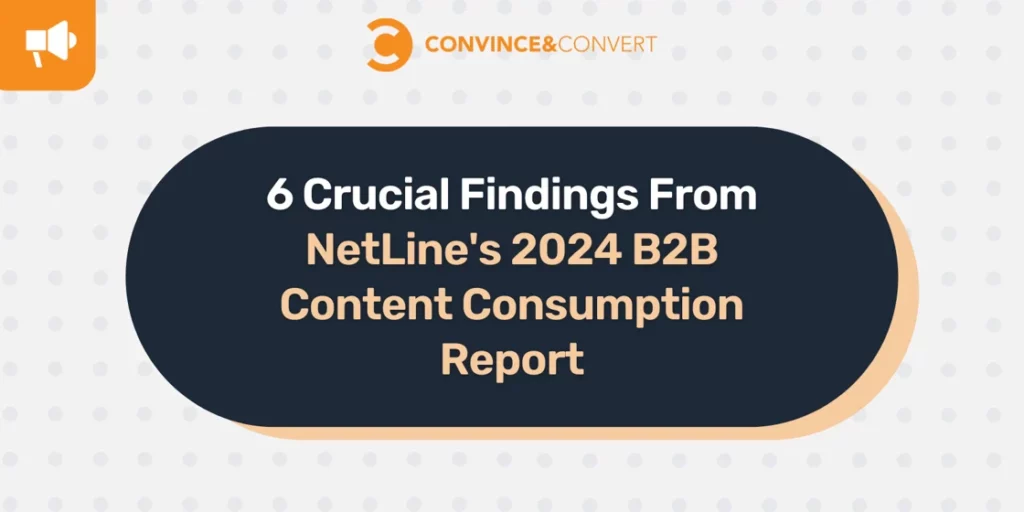
For the past eight years, NetLine’s annual analysis of B2B content consumption and demand has stood as a lighthouse for marketers navigating the stormy waters of content strategy and lead generation.
This year’s analysis draws from an impressive 6.2 million first-party content registrations and offers a map for marketers in search of treasure (aka new business).
Here’s a closer exploration of six profound insights that promise to redefine our navigational charts.
1. Users Don’t Hate the Gate
Provactive subheader? Yes.
Unreasonable statement? No.
In 2023, user demand for gated B2B content rose 14.3%. If that’s enough for you, since 2019, demand has risen 77%.
Considering how skittish some marketers have been over the years on the subject of gated content, this is some real compelling data. But NetLine’s data isn’t alone. The great and powerful Andy Crestodina said as much in 2021.
Don't hate the gate.
— Andy Crestodina (@crestodina) March 17, 2021
Do you have a problem with gated content?
Do you assume your visitors don't like them?
Actually marketers are more squeamish about gated content than visitors!
This is a preview. Full report goes live next week... pic.twitter.com/GoYes0RBV1
Regardless of personal opinions, we as marketers can leave our heads in the sand on quality data The 14.3% increase in registrations signals a clear path forward: Users are willing to invest their time and personal information for content that promises and delivers substantial value.
Of course, this isn’t a blanket recommendation to gate everything. That would just be silly. Rather, this insight should drive us to create gated content that not only captivates but also enriches our audience’s professional journey.
Perhaps this current resurgent interest in gated content marks a turning point in how we conceive of value exchange in digital marketing.
When we consider the next topic, I’d argue it’s crucial.
2. Improve Engagement By Using Buyer-Level Intent Data
In 2022, we noted that 33% of B2B buyers indicated that they would be in the market to make additional investment within the next 12 months.
In 2023, this figure rose to 35%.
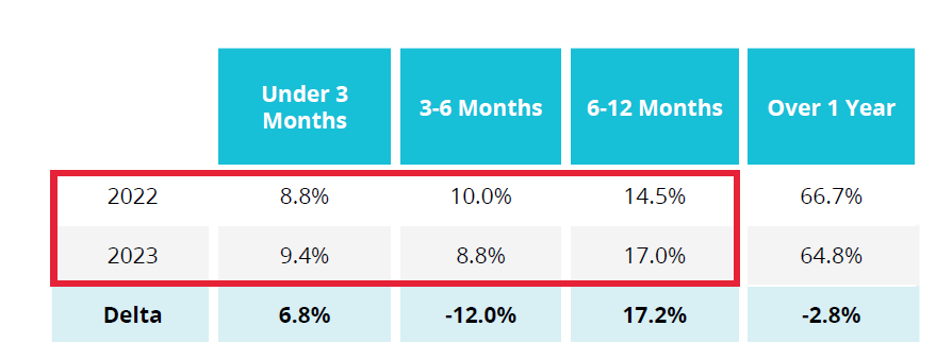
Considering the economic uncertainties across our industry last year, this is great news! What’s even more important in the big picture is how we got this information.
When NetLine introduced INTENTIVE last summer, we instantly had unrivaled visibility into a platform providing real-time, buyer-level intent data, capturing billions of intent-rich data points to discern genuine purchase readiness among B2B buyers.
So what did we learn from this? Quite a bit:
- Content formats like Playbooks, Case Studies, and Trend Reports are strongly linked with immediate buying decisions.
- Conversely, formats like Tips & Tricks Guides, Courses, and e-Kits signal less immediate intent.
- Certain job levels, notably C-Level executives and senior leadership, demonstrate a higher propensity for immediate buying decisions, while middle management and other senior employees often show more reserved buying behaviors.
- The IT industry continues to lead in content consumption, representing a significant portion of the total audience and showing robust year-over-year growth; Biotech, Pharmaceuticals, Retail, and Consumer Goods also indicated as more likely to make immediate buying decisions
- Non-Profit/Organizations and Government sectors are less likely to make quick decisions.
With Google saying bon voyage to third-party cookies in 2024, marketers need to figure out a means to keeping up with the needs of their audience and prospects. Buyer-level intent data is perhaps the best means to accomplishing this.
The insights we share in this year’s report suggest that a differentiated approach, tailored to the specific behaviors and preferences of job levels and industries, can significantly enhance the effectiveness of B2B marketing strategies.
By understanding and acting on these nuances, marketers can better align their content with the needs and timelines of their target audience, thereby improving engagement and increasing the likelihood of conversions. Without such an approach…you’re asking for trouble.
3. Utilize Strategic Patience With Content Consumers
The Consumption Gap (NetLine’s measurement of how long it takes for a user to consume — aka download — the asset they’ve requested) widened to 31.2 hours in 2023, a 2.5 hour expansion.
This comes on the heels of a 4.6 hour narrowing of The Consumption Gap in 2022.
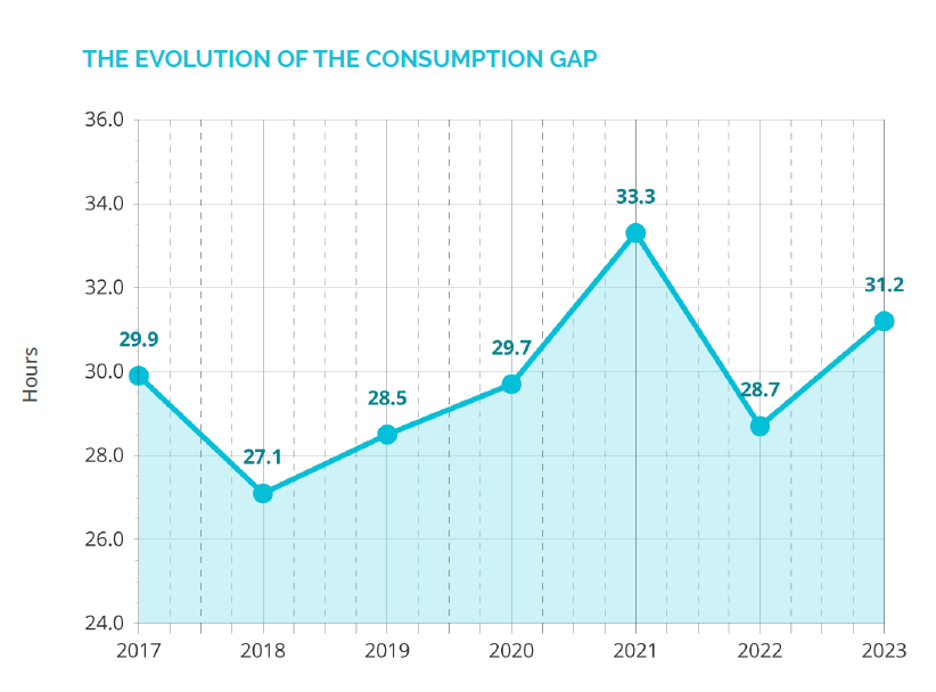
While the widening of the gap is worth exploring further (which we do on page 9 of the report), the more curious element is what marketers and sellers should do with this information.
In his latest book, The Time to Win, C&C founder Jay Baer shares a universal truth: speed is important. Baer states that 50% of customers are less likely to spend money if a business is slower than they expect.
This, however, is a datapoint for prospects who’ve actively raised their hand to contacted.
It’s different story when we’re talking about a form fill. Getting your lead to move from warm lead to closed-won business requires patience.
While it may feel odd, providing space to your leads at the outset of any relationship is table stakes. This isn’t a debate. The Consumption Gap proves it.
To build lasting connections, marketers must employ a balanced strategy that respects the audience’s need for time to digest content while remaining ready to engage actively when the moment is right. This careful balance of patience and readiness is essential for fostering relationships that are both respectful of the audience’s preferences and highly productive.
4. AI: Just as Hot as Allen Iverson
Alright, this one needs a bit of context.
As a kid growing up in suburban Philadelphia at the turn of the millennium, Allen Iverson was the coolest dude in the world.
I’ve made the AI = AI joke countless times professionally now, but honestly it works: Artificial Intelligence is to 2024 what Allen Iverson is to 2001 — hot.
Last year, NetLine saw a staggering 5.5x increase in AI-related content demand. Considering how little traction these subjects garnered across the platform, it’s clear just how much of a watershed moment ChatGPT’s introduction was.
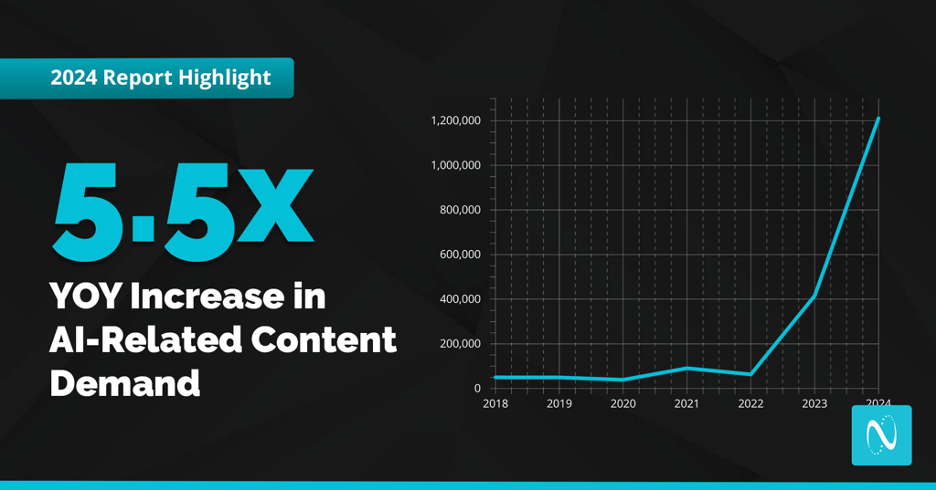
Despite years of proclamations from our wiser colleagues, marketers were mostly skeptical of the claims that, “AI would change everything.” I, personally, had seen enough companies boast about their AI-powered tools to be unconvinced of such statements.
I admit, I was wrong.
Clearly, this is not just a trend; it’s a transformative shift in the landscape. This surge signals AI’s move from the periphery to the core of B2B interest, presenting an opportunity for marketers to lead conversations in this space.
As AI reshapes industries, our content strategies must evolve to not only address but also anticipate the questions and curiosities our audience has about this pivotal technology.
5. Simplify to Amplify for the C-Suite
Kids, repeat after me: “Everyone always wants to reach the C-Suite.”
Tale as old as time. True as it can be.
We all want them to read and consume what we produce. And fortunately, they’re consuming more than ever!
These C-Level players are tuning in more than ever, representing 18% of the total consuming audience and showing a 7% jump in engagement YOY. This isn’t just casual browsing; it’s a sharp uptick in demand, proving that when you speak their language, you grab their attention
So what is it that hooks these top-tier execs? The answer may surprise you, but it shouldn’t: It’s the same stuff you and I want—simplicity.
The C-Suite wants clear, concise content. 53.9% figure reflects the proportion of content consumed by C-Level executives that comprises eBooks, cheat sheets, book summaries, and tips and tricks guides.
It’s a loud and clear message for B2B marketers: If you want to reach these top decision-makers, keep it simple and keep it impactful.
The power of brevity!
6. Case Studies Hold a Lot of Weight
E-books are the reigning king of B2B content formats. At this point, it seems their reign will go on for quite a good long while.
So why are we talking about case studies?
While they’re not the most requested format—sitting at a modest 0.1% probability as a follow-up choice from initial eBook registrations—when a prospect picks a case study, it’s a strong signal of purchase intent (second only to playbooks in terms of pulling power).
Despite not being the flashiest player, the format certainly is a clutch performer.
Case studies are silently stacking up the points. Users engaging with case studies are 78.5% more likely to pull the trigger on a purchase within the next 12 months.
So, what’s the takeaway for those playing the long game in B2B marketing?
Think of it this way: While eBooks might get the glory for sheer volume, case studies can be your Ace in the Hole, making significant plays when it counts.
For marketers, this means crafting case studies that not only highlight your product’s benefits but also resonate with those high-intent prospects, turning their interest into decisive action.
Navigating Forward
As we set sail into 2024, armed with these insights, our voyage through the B2B content marketing realm is poised to be both strategic and transformative.
The 2024 State of B2B Content Consumption and Demand Report is more than a collection of data points; it’s a compass that guides us towards creating content that resonates, engages, and converts.
Contact the team at Convince & Convert if you’d like help to expand on these insights, and to add depth and actionable advice to fully explore the terrain laid out in the research.

